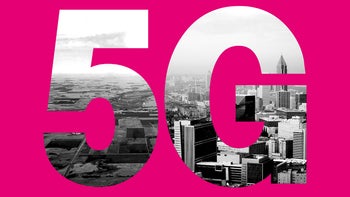5G bands cheat sheet: Verizon vs AT&T vs Sprint vs T-Mobile vs World

5G was introduced to the world approximately 5 years ago, and the USA was one of the leading countries in its deployment, especially at the early stages. It was like the gold rush in the wild west, with each major mobile carrier racing the next to be the one to offer the widest, most stable, and fastest coverage.
But 5G connectivity is not as simple as its predecessors. There are different "bands" of 5G, each serving its own unique purpose, complementing the rest. So, the question is what bands do the major U.S. carriers such as AT&T, Verizon, T-Mobile support, and how do they compare to the rest of the world?
In this article, we'll explore the important parts of 5G networks and the different types of 5G bands. We'll also look back at how these bands have been introduced since they first began in 2019, giving people their initial experience of faster speeds. We'll cover how 5G works and how these bands affect coverage. Let's dive in!
5G bands
5G is really three different types of bands and it's important to know the difference

5G comes in three main types:
- Low-band (600 MHz to 1 GHz): Travels over long distances but is slower, has speeds similar to 4G.
- Mid-band (1 GHz–6 GHz): Strikes a good balance between speed and coverage, the backbone of 5G networks.
- High-band/mmWave (above 24 GHz): Super-fast but doesn't travel far as it is easily blocked by obstacles.
Each type of band in 5G has its pros and cons, and the best results come when all three are utilized. In fact, this is one of the main aspects of 5G that separate it from previous generations, as it can use various frequencies in its bands, even at the same time. This flexibility makes 5G more adaptable, improving coverage and reliability.
The mmWave bands, though super fast and the main selling point for this new generation of cellular networks, are the most complex in 5G. Phones have to come with specialized parts (including specific antennas) in order to support the amazing speeds of high band 5G. That is why you will mainly find only more expensive phones supporting this peak performance that 5G networks boast.
5G bands and their frequency spectrums
mmWave spectrum 5G bands:
- n260 (37 GHz to 40 GHz)
- n261 (27.5GHz to 28.35 GHz)
- n257 (26.5GHz to 29.5 GHz)
- n258 (24.25GHz to 27.5 GHz)
Mid-band 5G spectrum:
- n77 (3700 MHz)
- n41 (2500 MHz)
Low-band 5G spectrum:
- n2 (1900 MHz)
- n5 (850 MHz)
- n71 (600 MHz)
Now let's take a look at what 5G bands each US carrier supports. Keep in mind that this a rather simple representation of the bands these carriers cover, but it gives a good enough overall look to make an educated guess where to purchase your phone, if 5G coverage is important to you.
| Verizon | AT&T | T-Mobile |
|---|---|---|
|
|
|
T-Mobile 5G bands
Industry leader with n41, n71, n261, n260
T-Mobile is widely seen as the industry leader in 5G roll-out in the United States. PCMag found it the fastest carrier in the United States in 2022 (and it was also the winner last year). T-Mobile has focused on first providing 5G wireless connectivity across the nation with mid-band 5G rather than start the 5G build out with mmWave like the other two carriers.
After the Sprint merger, T-Mobile quickly repurposed that carrier's extensive mid-band coverage to 5G in band n41, which allowed it to gain the lead in 5G speeds in coverage in 2020 and 2021. That has been the secret sauce. Whenever you see a "UC" connection on T-Mobile, that signifies that you are on the "utlra capacity" network, or in simple terms, you are using one of those fast mid-band connections.
T-Mobile is also using more of the mid-band airwaves than others. Typically, T-Mobile would serve up to 110MHz, while AT&T uses around 40MHz and Verizon uses around 60MHz.
T-Mobile also uses its 600MHz low-band spectrum on LTE Band 71, which was formerly used by channels 38 to 51 on UHF-based TVs. These are low-frequency signals that easily travel far and wide.
T-Mobile is also planning to use higher-frequency bands similar to what AT&T and Verizon use. Magenta plans to use the 28GHz and 39GHz bands for high-speed mmWave 5G transmissions.
Verizon 5G bands
n2, n5, n77, n66, n261, n260
Verizon's mid-band 5G roll-out is the biggest upgrade to the carrier network in years and it makes a real difference and delivering much faster speeds to people who are covered.
Historically, Verizon started building out its 5G network by focusing exclusively on the mmWave technology, using the 28GHz and 39GHz bands. This brought amazing speeds but only to a very limited number of people as mmWave airwaves don't travel long distances.
However more recently, in 2022, Verizon has widely expanded its C-band (mid-band). In January 2022, Verizon launched C-band 5G in 46 cities in the United States, compared to a similar launch in merely 8 cities by AT&T. The key to C-band's success is the wider coverage and bigger, 60MHz channel used. Since the launch, we have seen posts on Reddit from users impressed with 500Mpbs+ speeds in many of the cities.
AT&T 5G bands
n5, n77, n260
After dominating the market in 4G LTE technology, AT&T has been slow adopting 5G tech compared to the other 2 big carriers.
In the middle of 2022, it's only starting to experiment with mid-band 5G which is seen as the future backbone of 5G networks. While Verizon has announced a massive expansion of its mid-band network, AT&T has only started to experiment with towers in the Chicago and New York areas. The company has allegedly planned a wider build out in the second half of 2022 and further into 2023.
In the early days of 5G, AT&T also grew to "fame" for confusing users by labeling 4G technology as 5G Evolution. This was potentially misleading as you cannot just rebrand a 4G network and call it 5G. What AT&T has done then was it had upgraded cell towers and added new small cells that use LTE Advanced with technologies such as 3-way carrier aggregation, 4x4 MIMO and 256-QAM modulation. These technologies have allowed for improved speeds with theoretical peaks of up to 400Mbps. Great for users, but still not quite fast enough to qualify as true 5G.
AT&T also has a mmWave network based on its 39GHz band (band n260), but as all mmWave tech, this is limited to limited pockets in select urban areas.
USA vs World
This has allowed many of those European countries to have meaningful coverage far exceeding that in the US from the very launch of the service in the first half of 2019. Using low- and mid-bands will also allow some European countries like Switzerland and Austria to have a full, nationwide 5G coverage faster, but they will not benefit from the blazing fast speeds offered by mmWave.
Phones with 5G support
Added cost
The first 5G phones started arriving in the first half of 2019, and most phones these days come with some form of 5G support.
The very first and actually the most affordable phone to support the new technology was the Moto Z3 that was launched on August 16th, 2019. The phone itself did not have a 5G modem built-in, but you could add 5G connectivity via a Moto Mod, a bulky, $350 snap-on piece that worked with Verizon's 5G network only.
Here the most popular 5G phone models:
- iPhone 12, iPhone 13 series
- Samsung Galaxy S20, Galaxy S21, Galaxy S22 series
- Galaxy A52 5G, A53 5G editions
- OnePlus 8 and newer models
Beware that certain models sold at a particular carrier and marketed as 5G might not have the bands necessary to operate 5G on a different carrier. One common occurrence has been for Verizon to get exclusive versions of 5G phones that would support mmWave on Big Red, while the same phone sold on AT&T and T-Mobile would not have mmWave support and would typically cost a bit less.
Benefits of 5G over previous technologies
5G is not just a slight evolution, it offers significantly faster speeds for both uploads and downloads, theoretically as much as 20 times faster.
Right now, with very few users on the 5G networks, you can get some truly mind-boggling speeds: Verizon's network in Chicago can return download speeds of 1.3Gbps, faster than the nearly 500Mbps peak download speeds you get on Sprint (but Sprint has a wider and more stable coverage).
The other advantage of 5G would be the better management of voice traffic, which means more devices will be able to connect with every single tower, no call drops and significantly higher call quality.
As 5G becomes ubiquitous it will usher the advent of connected gadgets now that you have sufficient bandwidth and lower latencies. 5G is also often quoted as one of the key technology required for connected cars where every millisecond of lag matters.













Things that are NOT allowed: